
Color, 1979, 172m.
Directed by Roman Polanski
Starring Nastassja Kinski, Peter Firth, John Collins, Tom Chadbon, Leigh Lawson, Arielle Dombasle
Criterion (Blu-Ray & DVD) (US RA/R1 HD/NTSC), BFI (Blu-Ray & DVD) (UK RB/R2 HD/PAL), Pathé (Blu-Ray & DVD) (France RB/R2 HD/PAL), Vertice (Blu-Ray & DVD) (Spain RB/R2 HD/PAL), Sony (DVD) (US R1 NTSC) / WS (2.35:1) (16:9) / DTS-HD 5.1/PCM 2.0
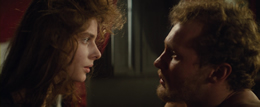
A radical change of pace following the psychological holocausts of The Tenant and Macbeth, this was director Roman Polanski's surprising first project 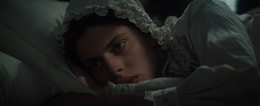 after his flight from the United States under extremely controversial circumstances. On the surface, the pastoral Thomas Hardy novel Tess of the d'Urbervilles seems a bizarre choice, but its themes of sexual power struggles and manipulation eventually consumed such later Polanski films as Bitter Moon and Death and the Maiden. Furthermore, this was reportedly one of his late wife Sharon Tate's favorite books (and a leading role she was reportedly considering at the time of her death), a motivation that similarly spurred his later, less warmly received adaptation of Oliver Twist. Despite its protracted running time, Tess is an engrossing, richly rewarding film that has held up far better than many of its peers.
after his flight from the United States under extremely controversial circumstances. On the surface, the pastoral Thomas Hardy novel Tess of the d'Urbervilles seems a bizarre choice, but its themes of sexual power struggles and manipulation eventually consumed such later Polanski films as Bitter Moon and Death and the Maiden. Furthermore, this was reportedly one of his late wife Sharon Tate's favorite books (and a leading role she was reportedly considering at the time of her death), a motivation that similarly spurred his later, less warmly received adaptation of Oliver Twist. Despite its protracted running time, Tess is an engrossing, richly rewarding film that has held up far better than many of its peers.
Informed by a parson on horseback that he is descended from a noble family line called the d'Urbervilles, a simple farmer named Durbeyfield (Collins) decides to investigate his roots with the aid of his good hearted daughter, Tess (Kinski), who pays a visit to a nearby family bearing that name. The handsome d'Urberville son, Alec (Lawson), seduces Tess and leaves her abandoned with child. As it turns out, Alec and his family had bought the D'Urberville title and are no relation at all. Tess returns home and marries Angel Clare (Firth), a seemingly gentle man who finds himself unable to cope with Tess's less than illustrious past; ironic tragedy is soon to follow.
In her star-making role after appearances in films like To the Devil, a Daughter and Boarding School, Kinski is magnificent to behold, thanks in no small part to the ravishing, Oscar-winning cinematography by Geoffrey Unsworth and Ghislain Cloquet (with awards also going to its art direction and costume design). The English countryside has never looked more astonishing, with each scene as perfectly composed as a Corot painting and filled with fascinating visual details. Also noteworthy is the delicate score by Philippe Sarde (who previously scored Polanski's The Tenant), which made him an internationally recognized name and benefits from the skilled conducting of Carlo Savina (Lisa and the Devil).
Tess was enthusiastically received upon its theatrical release after a slightly rocky festival debut, easily filling in the void of Thomas Hardy adaptations since John Schlesinger's excellent but still underrated 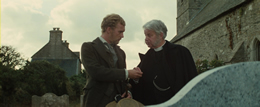 version of Far from the Madding Crowd in the previous decade. The film inspired a new surge of interest in the author, with more versions of the story to come with several for British television and even a Rajasthan-set version from Michael Winterbottom, Trishna, released in 2012.
version of Far from the Madding Crowd in the previous decade. The film inspired a new surge of interest in the author, with more versions of the story to come with several for British television and even a Rajasthan-set version from Michael Winterbottom, Trishna, released in 2012.
Despite its popularity, Tess dropped out of circulation for mysterious reasons during the 1990s (apart from a pretty poor, cropped Japanese laserdisc) but eventually resurfaced again around the globe on DVD from Sony and other subsidiaries in 2004. The anamorphic standard def transfer wasn't much of a knockout either, with loads of ghosting, shimmering, and other nasty artifacting all over the screen. On the other hand, it did include a 72-minute documentary by Laurent Bouzereau sliced up into various segments with all of the principals talking about the film, its source novel, and Polanski in general. Incidentally, all extant video versions are "cut" in that they omit the overture and intermission music, which explains the inflated running times 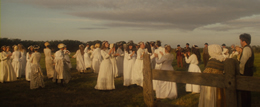 reported from the premiere screenings.
reported from the premiere screenings.
Flash forward to 2012, when the film received a gala premiere for its costly film restoration at the Cannes Film Festival with Polanski in attendance. A Spanish Blu-ray popped up around the same time from a pretty decent 35mm print, but it was obvious that a better version would be just around the corner. The first came at the end of 2012 in a pricey French edition (complete with some French-only featurettes), with the BFI offering its own dual-format (Blu-ray and DVD) one shortly thereafter in March of 2013. The new HD transfer looks much, much better than what we've had before; the little period touches in the clothing and sets now register as they should, and the dusky night scenes finally don't collapse into sludge. The painterly look of the film means it obviously doesn't "pop" the way some other HD transfers do, but this appears to be an accurate rendering of the original cinematography. The BFI Blu-ray contains both a Dolby Digital 5.1 (640kps) audio option and a two-channel PCM option, with the latter sounding more like it did in theaters. Either way it sounds quite nice, with Sarde's score benefiting the most. The Blu-ray also contains a two-minute look at Anthony Powell's award-winning costume designs (showing sketches alongside the finished product in the film), while the DVD disc ports over the Sony 2004 extras dividing in the same way: "Tess: From Novel to Screen," "Filming Tess," and "Tess: The Experience," which again are worth watching in sequence as one long documentary for maximum effect. The booklet also contains a lengthy, informative essay about the film by Philip Horne, who dissects it from the source novel to the restoration, as well as a Michael Brooke director bio, relevant excerpts from Polanski's autobiography Roman by Polanski, additional Powell notes about the costumes and the general production.
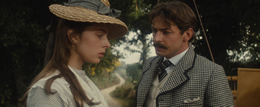 It took almost a year for America to get its own Blu-ray of Tess courtesy of Criterion's edition, which is also dual format with two DVDs and a single Blu-ray containing the same extras. If ever a film needed to be seen in HD for maximum impact, this would be it, so try to avoid the DVD option if you can. The transfer is very, very similar to the BFI one since they're from the same excellent restoration; the only difference is the black levels, which are a few notches deeper here and give more of a sense of depth. On the other hand, the BFI disc looks slightly more pastel and painterly, so it's really a matter of aesthetic preference; either one works just fine. The 5.1 mix is the sole audio option here (DTS-HD), actually sounding fuller for some reason, and optional English subtitles are also included (which comes in handy every time Tess's dad opens his mouth). Of course, what really sets this release apart is the extras, an astonishing bounty for fans of the film collecting pretty much everything you could want in one place. The first supplement is actually the most astonishing: a 49-minute episode of the 1979 French TV program Ciné regards, shot on location during the making of the film. There's a wealth of footage from the shoot with virtually all of the principals involved, with Polanski seen directing extras in French and then switching to English for some of the crew. Polanski also appears in some interview footage (in French with subtitles) talking about his career in Hollywood and the reasons he chose Kinski. Especially interesting is the off camera footage of familiar scenes from the film, especially the train sequence and the finale.
It took almost a year for America to get its own Blu-ray of Tess courtesy of Criterion's edition, which is also dual format with two DVDs and a single Blu-ray containing the same extras. If ever a film needed to be seen in HD for maximum impact, this would be it, so try to avoid the DVD option if you can. The transfer is very, very similar to the BFI one since they're from the same excellent restoration; the only difference is the black levels, which are a few notches deeper here and give more of a sense of depth. On the other hand, the BFI disc looks slightly more pastel and painterly, so it's really a matter of aesthetic preference; either one works just fine. The 5.1 mix is the sole audio option here (DTS-HD), actually sounding fuller for some reason, and optional English subtitles are also included (which comes in handy every time Tess's dad opens his mouth). Of course, what really sets this release apart is the extras, an astonishing bounty for fans of the film collecting pretty much everything you could want in one place. The first supplement is actually the most astonishing: a 49-minute episode of the 1979 French TV program Ciné regards, shot on location during the making of the film. There's a wealth of footage from the shoot with virtually all of the principals involved, with Polanski seen directing extras in French and then switching to English for some of the crew. Polanski also appears in some interview footage (in French with subtitles) talking about his career in Hollywood and the reasons he chose Kinski. Especially interesting is the off camera footage of familiar scenes from the film, especially the train sequence and the finale.
Some of this same footage is also used in a 1979 episode of The South Bank Show (50 minutes), which is structured around a Polanski interview by host Melvyn Bragg. A lot of the same material is covered here with Polanski saying it in English instead, but it's great to have coverage of his less discussed films like Macbeth and Cul-de-sac and more information about his film school studying in Poland. Then we jump ahead to 2006 with the French TV documentary "Once upon a Time... Tess" by Daniel Ablin and Serge July, with Polanski, Kinski, Sarde, Lawson, producer Claude Berri, and Powell. Made for the series A Film & Its Time, the 52-minute piece juggles discussions of the story's themes and the context of the time in which it was made, which saw the initial rumblings of the digital revolution and the demise of the old Hollywood system. Lawson and Kinski get some especially nice moments talking about the intricacies of their characters, particularly the pivotal rape scene (which coincided with a change in laws criminalizing the act around the same time). The three-part doc from the 2004 release is carried over here, along with the original theatrical trailer. The striking packaging contains a liner notes booklet with a lengthy essay by Colin McCable, who breaks down the source novel's censorship issues at the time and the film's ability to go back to Hardy's original, more shocking intentions in a few key moments. Essential viewing.
Updated review on February 8, 2014.






